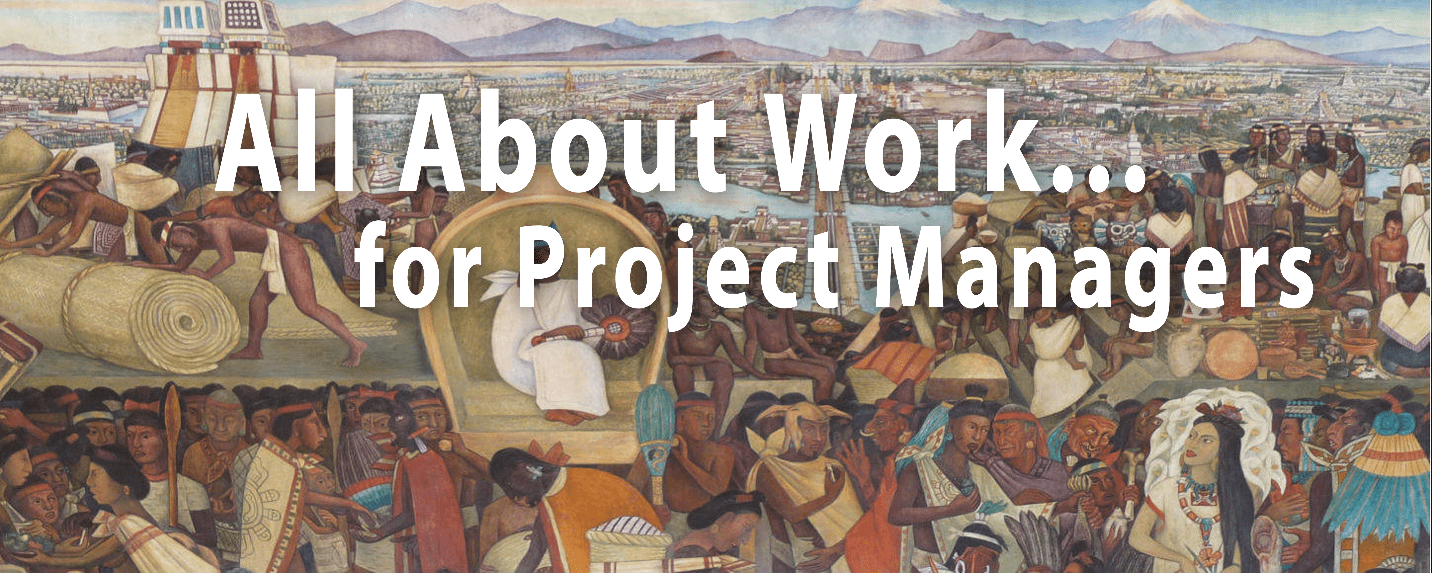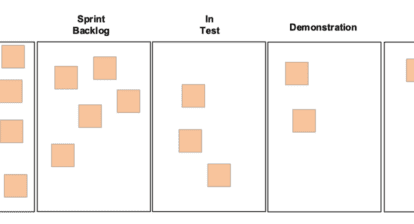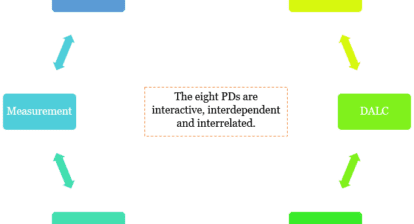The True Nature (and Math) of Work
Sometime around the late 1800’s and early 1900’s, Nikola Tesla famously declared, “If you want to find the secrets of the Universe, think in terms of energy, frequency, and vibration.” What if we just want to find the secrets of successful project work, and not necessarily uncover every secret hiding in the cosmos? Can we use Tesla’s interesting idea to better understand how better project management techniques (and tools) could be produced for the future? Let’s try…
Tesla said that energy is used to move matter (via vibrations), and that during this event, frequency is time-bound. We can think of frequency in terms of Atomic-clock time, which helps us define commonly understood “periods,” such as a second, minute, hour, etc. All this is made possible by close examination of spinning caesium to the tune of 133 atoms. See my previous article, All About Time… for Project Managers, for other ways to look at time, and what that may mean for future project success.
Tesla gives us a working definition of work itself. Let me paraphrase: humans (or machines) expend energy to move matter at a certain frequency, and that gets things done. For example, take an ancient human slowly planting seeds taken from a seed bag, and now take a modern machine that is moving data (ones and zeros) at 150 megabits per second. The first is resulting in food, and the second in WiFi. Both are valid examples of critical work, and both are in line with Tesla’s way of thinking.
In these examples, the work performed is operating under Tesla-like principles, which is also the Golden Rule for waves (shout out to all engineers). This “golden rule” is the relationship between the speed (v) of a wave, the wavelength (λ) and the period (T) and frequency (f) of the wave. Since T=1/f and f=1/T, we can simplify this math and just say v=λf. This follows the logic of another well-loved formula: speed = distance / time.
In a thought experiment, let’s substitute W (the work) for λ (one seed planted in row, then another, then another, until a field is planted with many rows of seeds), leaving us with v=Wf, or the more useful, W=v/f, so that work can now be defined by how many “vibrations” happen over time.
In this case, a vibration could be the seeds being planted. It could also be cars being built or tweets being sent. It’s all work! To increase the amount of work completed, we need to increase or inject more energy into the system, whatever that work-producing system may be.
Now imagine a Tesla PM Box (yes, it’s black) whose input is energy, and the output is successful work. What would we find inside this said box… a dead cat, or one meowing for milk? We know from Schrödinger’s math that the very act of looking inside to check on the cat, changes the situation, which, in this case, might change the output of work from our black box. More energy and/or less checking on kitty should produce more work, right? We instinctively know this from our daily PM lives, where we have to balance how much time we spend on measuring work, vs. how much we actually work. Now imagine with our new box, we do none of that! We just crank up the energy and turn a frequency knob left or right to achieve the desired output.
How could one build such a box (without killing hundreds of kitties in the process)? Logically, we’d have to better quantify all that we are working with in reality: time, work, and people – first – even before we talked about painting the box another color. Then, we’d need a new mathematical formula to put this all together.
Modern Day Work: Another Day, Another Dollar?
Believe it or not, there was once a time when money (or what we PMs call cost) was not as intimately tied to work as it is within current society, and within today’s Microsoft Project. Archeologists are sure (as am I) that there was once a time when very large and complex projects were completed without any money exchanged at all (consider ancient egalitarian societies).
Only very recently in human history, has the saying “another day, another dollar” been true. It’s only been a few thousand years or so that there is evidence of “a dollar” or anything like it, yet long before the first coin, we humans were managing such megaprojects as Göbekli Tepe, the Rice Terraces of the Philippine Cordilleras, Stonehenge, the ancient city of Mycenae, the Pyramids, and much more infrastructure. In each of these instances a lot was accomplished without throwing a single dollar anywhere near the work equation.
|
If the current politics in America are any indication, there could be evidence that money and work may once again merge into one. The progressive American left recently announced a “Green New Deal,” projected to cost some 20 to 30 trillion dollars or more – so expensive it makes the entire idea of money meaningless. Imagine that amount of dollar bills stitched end to end, forming a string of orbiting paper stretching from here to Saturn and back – three times over! How would you like to manage that project, considering the deadline is a global doomsday? |
 |
The Future of Work (and PM Math)
So, with megastructures and other monolithic projects on the horizon (we need a few dozen or more to save the planet), how can we best plan our work in a way that makes it most successful? After all, all of our lives and our descendants depend on it. Should we continue to define work as resources (people, money, and materials) + time = ultimate success, assuming that you can add more resources or more time to any bit of work, and have that effort succeed? Well, that math did not resolve well for the Airbus A380, the Sochi Olympics, the Big Dig, and countless other overdue and over budgeted projects…
Oxford’s leading PM professor Bent Flyvbjerg notes that virtually every mega construction project underway in the world is running overdue and over budget, and it only seems to be getting worse. (I’m just surprised that we’re wasting so much money, that we have to measure lost dollars in terms of interplanetary orbiting money strings!) Flyvbjerg postulates this for the miserable state of big PM today, “…there might be something new that is happening, given the change in the weather and the change from a carbon-based economy to a renewable economy,” says Flyvbjerg. “Both of these trends have impacts on mega projects and failures.”
Sure, I totally agree with Prof. Flyvbjerg, but I also think we can’t change the weather unless we first have a renewable economy (free from carbon). To do that, we have to figure out how to do more work faster, and with a lot more energy than ever before – or we may soon go the way of the Myceneans, the Kushites, the Nabateans, the Minoans, and so many other lost civilizations that did so much, but ultimately failed.
The question boils down to this: Can we get where we need to be, planning and executing new mega projects (for example, a global system of carbon collection) using 1) industrial-age math, 2) industrial-age PM methodologies, and/or 3) newer digital tools? I say “NO” to 1 and 2, but “HECK YES” to number 3. Take, for example, our failure to include effectiveness in our math while we can resolve for efficiency (η) until the cows come home. The same applies to our PM methodologies and current PM tools – we have employed little (if any) math for effectiveness, yet… I invite you to consider something else!
AI, the Additional Energy We Need…
In a recent Intelligence Squared debate, one of the world’s top debaters (Harish Natarajan) squared off against IBM’s latest AI-enabled computer, dully named Project Debater. The two debated the question, “Should the government subsidize pre-school education for citizen parents.” While Project Debater didn’t win the debate, she did put up an amazing and groundbreaking show. She showed the world that for the first time, a computer can be asked to think about a randomly-picked problem for 15 minutes or so, come up with reasonable solutions, and then engage with a human to figure out the best way forward, or at least provide the human problem solver with a look at all sides of the issue. She even helped the human partner weigh the outcomes – all in real time!
Sci-fi once again becomes science fact, as AI can now truly augment our onboard human intelligence in ways meaningful to any project manager. And harkening back to our Tesla thought experiment, we just got a tremendous energy boost and lots more dials on the black box we want to build.
Summing It Up (Or Just Vibrating Less)
In All About Time… for Project Managers, we discussed quantum influences on our concept of time using several thought experiments. Here, we’ve discussed the nature of work and the need for better math (and a new black box). In the third of this series, All About People… for Project Managers, we’ll look at how our notion of people and other resources impact project success or failure. Perhaps by better understanding ourselves, and by better quantifying our capabilities (and using better math), we can become better equipped to get needed work done – so as to not fail at the most mega projects of them all—preserving our current civilization.
If you have an interest in better quantifying time, resources, and work for the post-digital age (and you, too, would like a black PM box), let me know in the comment box below.











Ed
This is an interesting concept. I am curious how this can be applied to our daily lives and to the ever present global warming. Please keep the ideas coming!
John Williamson
Just so we all remember that some of us are the carbon units AI will be replacing.
See “AI Super-Powers” by Kai-Fu Lee
Yes, I am tired of being the “black-box”. If you have a better mouse trap than my cat, I am all ears.